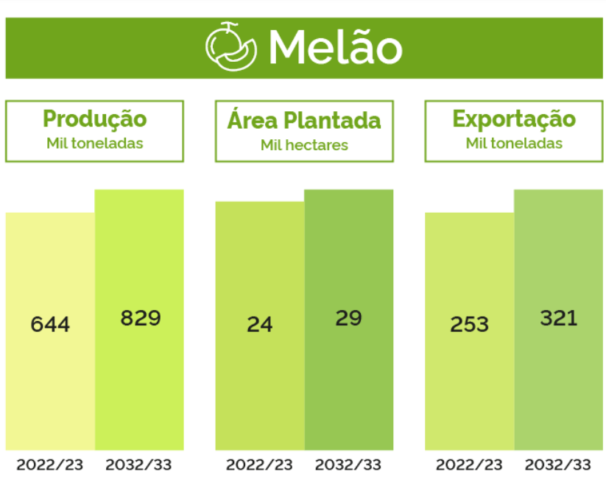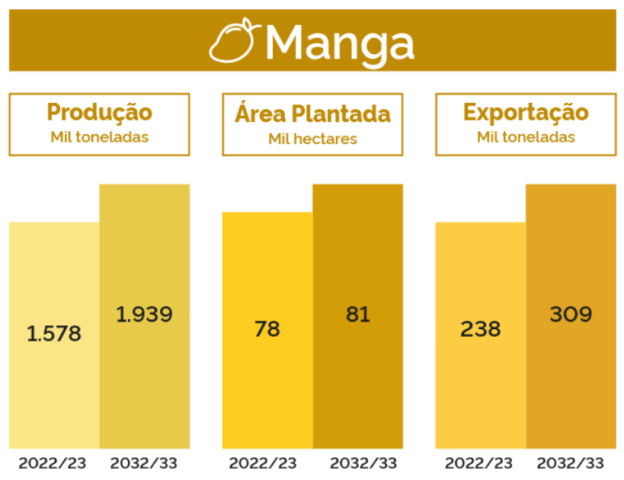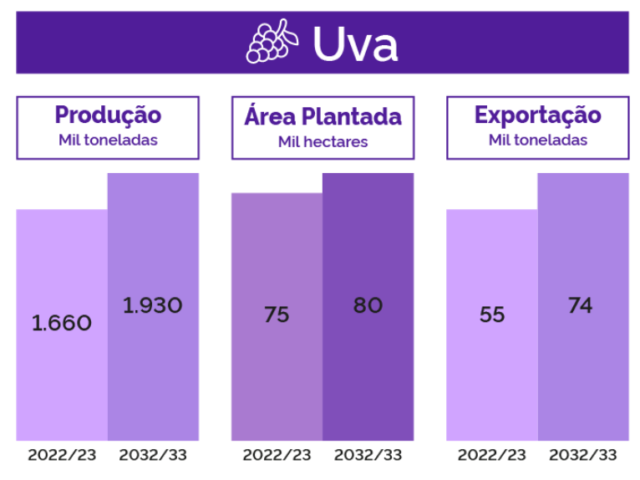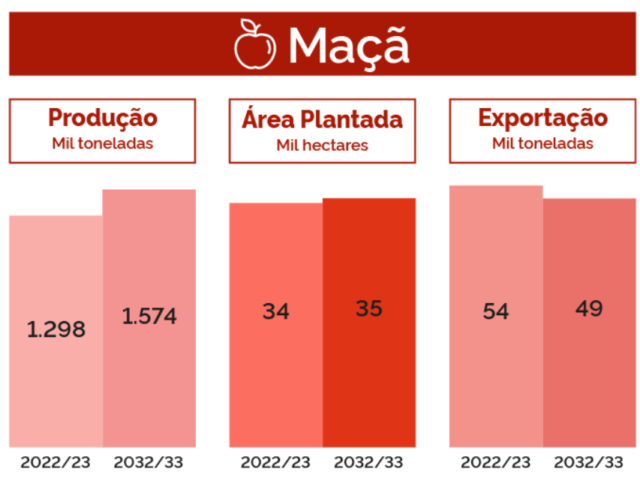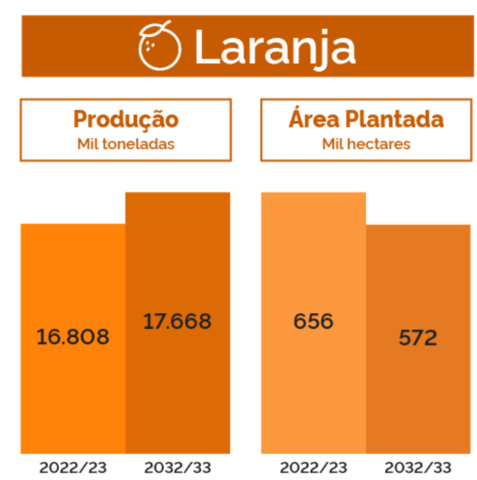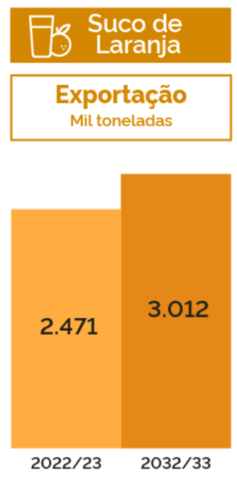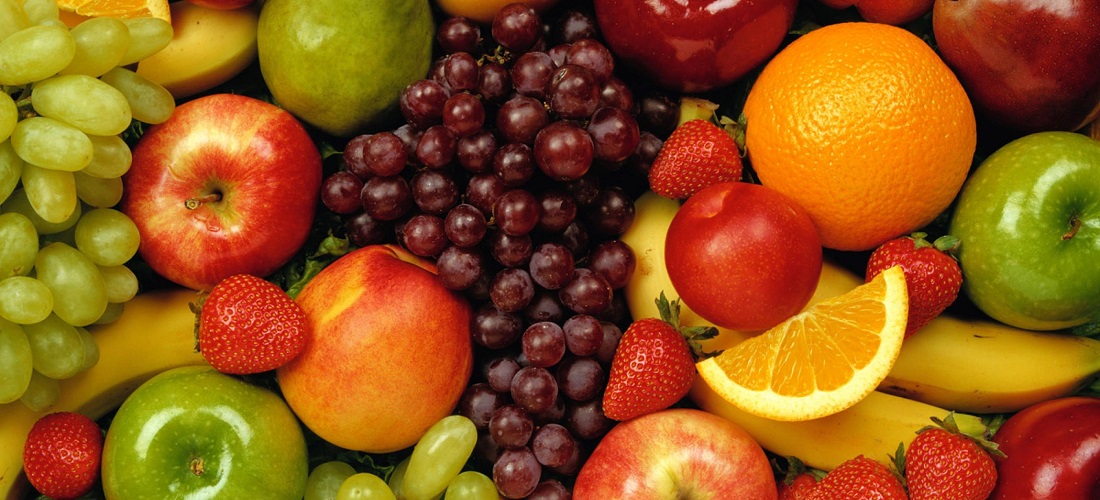
Mango and melon are spotlights in fruit projections for the next ten years
Jul, 26, 2023 Posted by Lillian SmoakWeek 202331
Brazilian fruits have shown increasing importance, both in the domestic and foreign markets. From January to June this year, the value of exports (including walnuts and chestnuts) was US$ 533.3 million, and the amount exported was 483.3 thousand tons, shipped to more than 120 countries. The European Union is the main destination for national exports.
Lemons and limes, melons and mangoes are the fruits that presented the best results this year (January to June) in terms of export value – lemons and limes US$ 84.6 million, melons US$ 69 million and mangoes US$ 68.4 million . Grapes, avocados and apples also performed well, with $36.4 million, $30.1 million and $29.5 million in revenue, respectively.
Production projections up to 2032/2033 show that the biggest increases in production should occur in melon (28.7%), mango (22.9%), apple (21.3%) and grape (16.3%).
The numbers are part of the study Projections of Agribusiness, Brazil 2022/23 to 2032/33, carried out by the Agricultural Policy Secretariat of the Ministry of Agriculture and Livestock (Mapa) and by the Brazilian Agricultural Research Corporation (Embrapa).
Melon
According to industry analysts, growth in melon production and area makes sense if Brazil manages to open up new export destinations. The European market is well consolidated and the Chinese market is still under negotiation. Production makes use of technology, especially in Rio Grande do Norte and Ceará.
Source: MAPA
Mango
Recent area increases may allow for production growth, but an interruption in area expansion is expected. As for exports, growth is expected to continue, but at a less intense pace than projected in the model.
Source: MAPA
Grape
Area increases in the São Francisco Valley and also the availability of productive varieties may increase production in the next decade. There were significant increases in areas in the table grape regions in the South and Southeast of the country.
Source: MAPA
Apple
The estimate is that the apple planting area will be practically stable over the next ten years, but with productivity gains resulting from constant technological investments in the sector. There is interest in new varieties, more adapted and that can be denser.
Apple exports depend a lot on national supply, competitors and demand from the main destinations. The tendency is for product shipments to grow.
Source: MAPA
Orange and orange juice
Orange production should increase from 16.9 million tons in the 2023 harvest to 17.7 million tons in 2032/33. Annual growth should be around 0.5% over the next decade.
The planted area should suffer a reduction in the coming years, with a decrease from the current 656 thousand hectares to 572 thousand hectares. The state of São Paulo, the main producer in the country, has been reducing the orange harvest area.
Source: MAPA
Orange juice exports should increase from 2.5 million tons in 2022/23 to 3 million tons at the end of the projection period. This represents an increase of 21.9% in the amount exported. Revenue this year (January to June) was US$ 1 billion for a quantity of 1.3 million tons exported, with 75.8% of world participation.
Brazilian participation in the world orange juice market was 49.5% in 2022. World imports were US$ 3.99 billion and Brazilian exports were US$ 1.98 billion in the same period.
Source: MAPA
-
Ports and Terminals
Jun, 29, 2023
0
Port Authority requests engineering studies to move forward with Santos-Guarujá tunnel
-
Shipping
Nov, 01, 2019
0
Greek-flagged Bouboulina ship is suspect of oil spill on northeastern beaches
-
Ports and Terminals
Aug, 23, 2024
0
Porto Itapoá wins the GHG Gold Seal for the 2024 cycle and joins the Global Compact’s Net Zero Ambition Movement
-
Shipping
Aug, 14, 2023
0
UN: Brazil has long way to go in terms of non-traditional fuels


